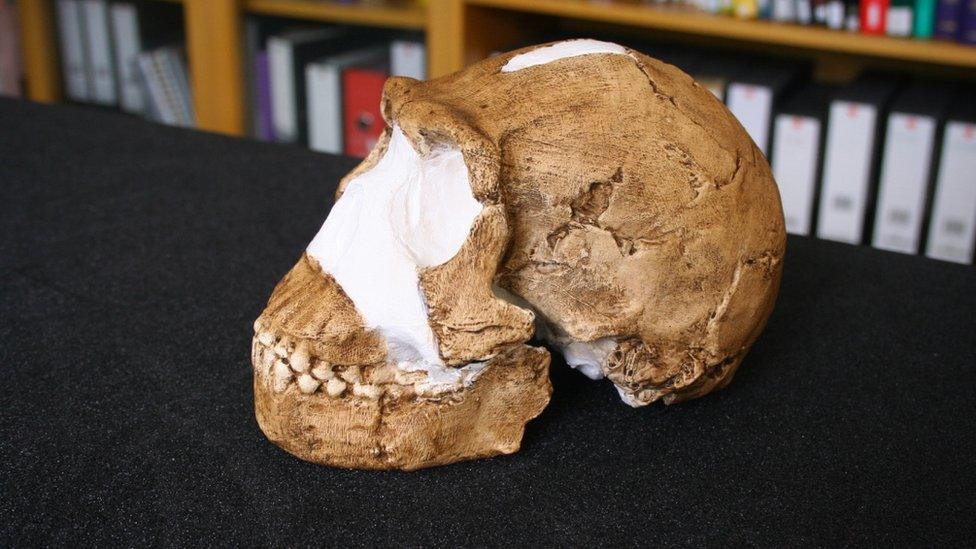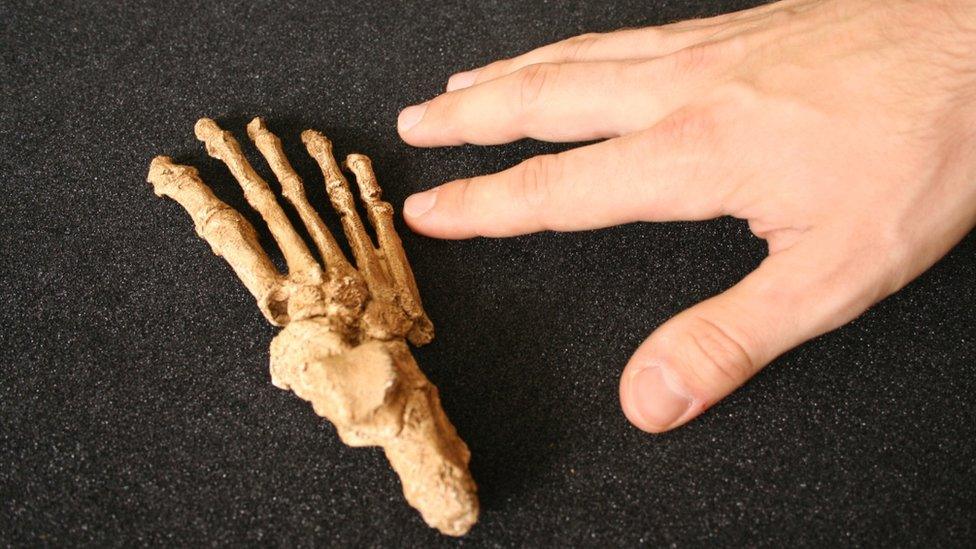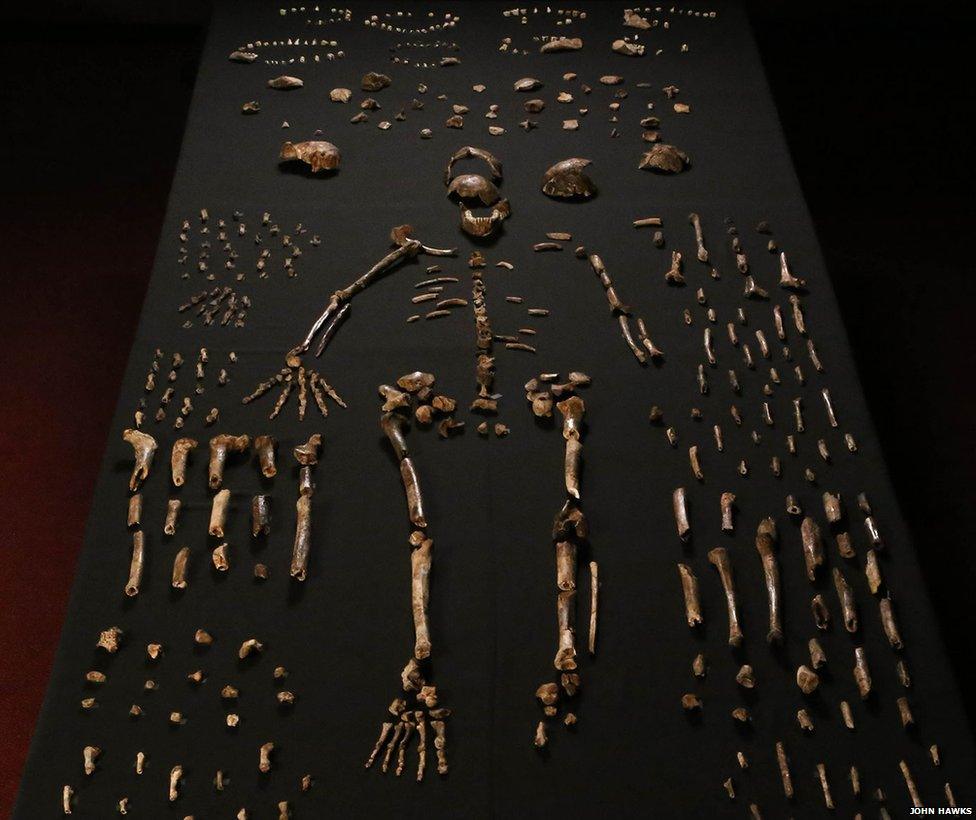Homo naledi fossil prints come to London
- Published
Dr Louise Humphrey: "The effect on the field is transformative"
They are among the most sensational fossils to be found in Africa in recent years, and visitors to London's Natural History Museum can see what all the fuss is about on Friday.
3D prints of the remains of Homo naledi will be on display at the NHM's Science Uncovered event, external.
They were given to the institution by the Johannesburg discovery team.
Bones from perhaps 15 of the human-like creatures were recovered from a cave complex not far from the city.
It is the biggest haul of fossil hominin remains ever identified on the African continent.
The researchers - led by Lee Berger of Wits University - have scanned the bones to make faithful copies, and these have now been shared with the London museum.
At Science Uncovered, Dr Louise Humphrey will be explaining their significance and what they could tell us about human origins.
"I think the effect on the field is transformative," she told BBC News, "not just because the morphology indicates a new species, but because there are so many unanswered questions.
"We don't yet know how old these fossils are. We don't know yet whether there will be full bodies in this chamber, or nearby chambers.
"The number of finds from a single fossil locality is unprecedented. There are apparently three small babies and three small children, some older children as well as some adults."

The diminutive hand of naledi. The bones were found in position
NHM visitors will get to see a model of a skull. There are also examples of a hand, a foot, and some jaws.
They are all small because, even as adults, naledi is diminutive, perhaps standing no taller than about 1.5m (5ft).
Wits University has previously shared casts of other fossils it is working on, including those of a more ancient creature called Australopithecus sediba, which was also found in the Cradle of Humankind World Heritage Site in Gauteng province. These too will be available on Friday to compare and contrast.
Deep debate
There are probably two major unanswered questions surrounding H. naledi at the moment.
One concerns the age of the fossils. If any dating technique has been used to try to establish this, the results have not been released.
Currently, it is being assumed they are very ancient - maybe a couple of million years old - purely on the basis that some features seen in the bones look very primitive.

3D printing is opening up the field, allowing many more scientists to assess finds
The second major question centres on what the remains were doing in the Rising Star cave complex.
The Wits team has mooted the possibility that naledi may have disposed of its dead there deliberately. That is a remarkable proposition if the creature is as old as has been suggested.
But it is perplexing to think how so many individuals could navigate their way into such a deep cave.
The scientists found the remains in an opening at the bottom of a very narrow chute. But even to get to the chute, the researchers had to crawl through other narrow gaps and make some steep climbs.
How naledi managed this is inexplicable. It is unlikely this creature had access to torches; controlled use of fire came much later in history.

It is clear from the shape of the foot that naledi was an efficient walker
Already, some furious arguments have surfaced over the interpretations put forward by the Wits team.
Rival researchers have even questioned whether the fossil haul actually represents two or more different species, or just a slightly different version of a species we have seen before.
"Not everyone is going to agree with Lee Berger's team. But all credit to them - they've put the material out," commented Prof Chris Stringer from the NHM.
"If you don't like their interpretation of the fossils, you can download the files and print your own. You can draw your own conclusions," Prof Stringer told the BBC.
Science Uncovered is a free event, external. It is open to everyone, but is most suitable for adults. It starts at 18:00 BST.

Homo naledi has a mixture of primitive and more modern features
Jonathan.Amos-INTERNET@bbc.co.uk, external and follow me on Twitter: @BBCAmos, external
- Published10 September 2015
